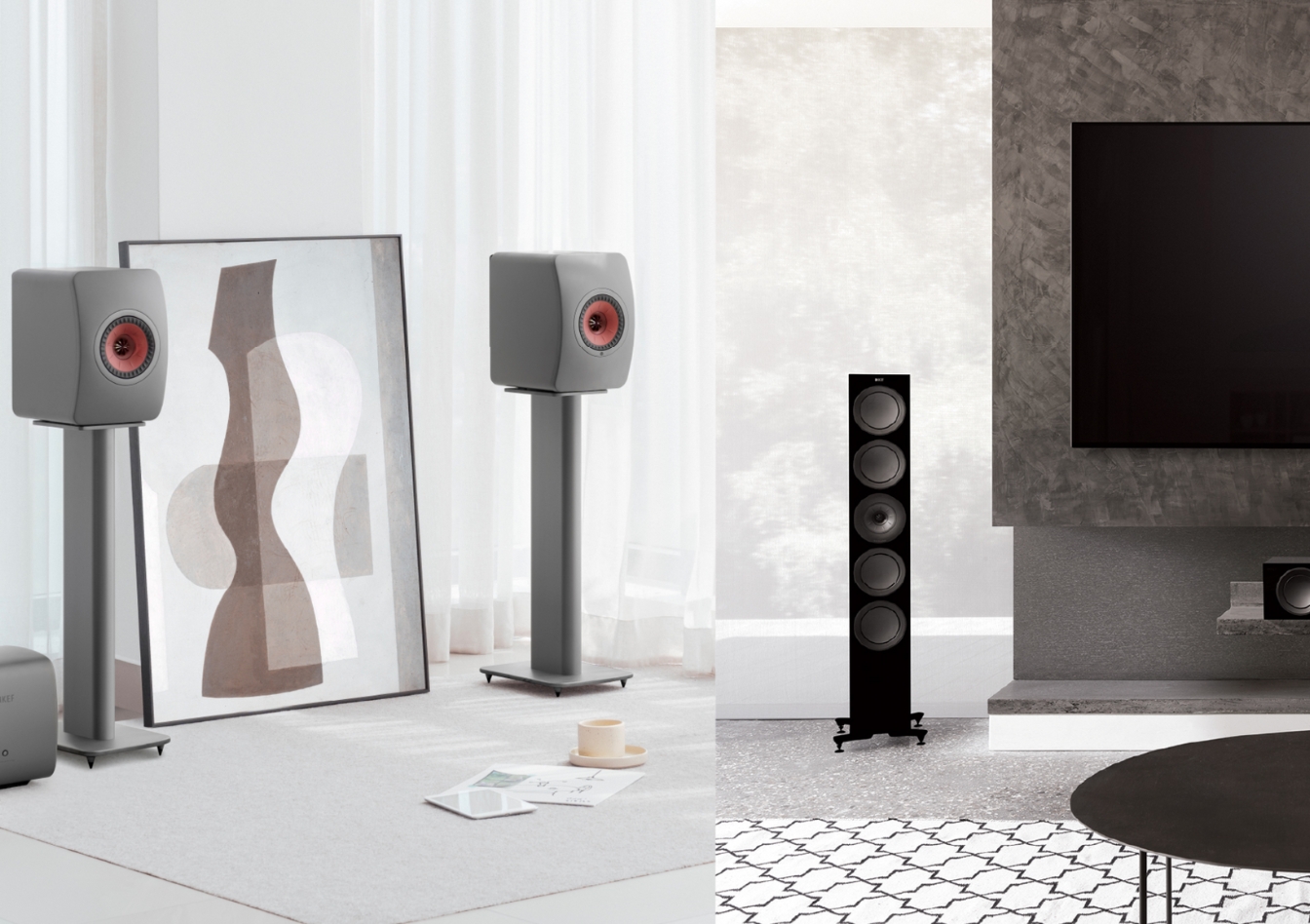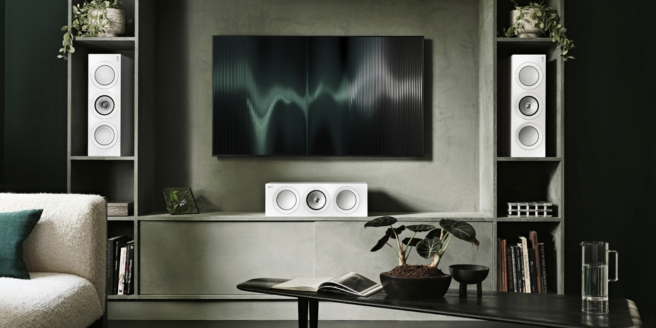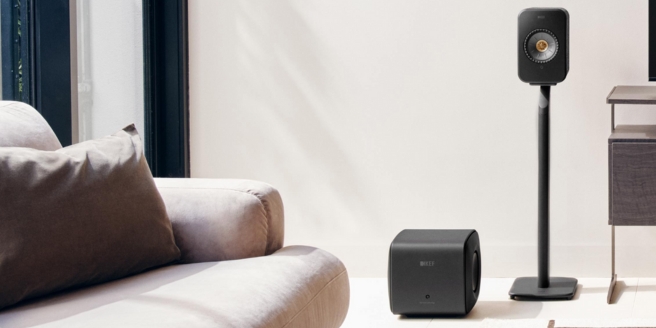In this guide, we give our advice on which speakers need amplifiers, which amps to choose from, and plenty more so that you can amp up your audio like an expert.
What is an Amplifier for Speakers?
A speaker amp, or amplifier, is a piece of technology that boosts an audio signal so that it can be heard. It does this by taking the audio signal and increasing its amplitude (strength) before sending the strengthened signal to the speakers. In other words, the middle man between your source and speaker.
How Amplifiers Enhance Sound Quality in Home Audio
On top of their key functionality, amplifiers also allow you to control the sound volume from your speakers. You know when the movie audio is too quiet, and you can scarcely make out the dialogue? The amplifier allows you to turn everything up to hear what the characters are saying.
Amps are the main control unit for all different sources like CD players, streamers, DACs, and turntables. Some amps also have built-in streamers and DACs and a phono pre-amplifier for the turntable.
If that wasn’t enough, amplifiers also allow you to shape your sound, equalising signal tone and frequency according to your individual taste, and customising your listening experience.

Do You Really Need an Amp?
Amplification is a necessary part of the sound reproduction process, nothing comes out of your speakers without them. However, that doesn’t necessarily mean you must purchase an amp to complete your sonic setup. Some active speakers come with inbuilt amplifiers, while passive speakers require them as a separate component.
Understanding Active vs. Passive Speakers: The Role of Amplification
Passive speakers are the most common type, referring to stand-alone loudspeakers that require external amplifiers to power (or ‘drive’) them. Active speakers - sometimes referred to as wireless speakers - come with built-in amplifiers and can also describe everything from a TV to a table-top radio to a mobile phone to a hearing aid. In each case, the amplifiers are an intrinsic part of the package.
Passive speakers can also be known as wired speakers. Our guide comparing active and passive speakers can help you select the best audio setup option.
Benefits of Using an Amplifier with Passive Speakers
Passive speakers allow you to select an amp and speaker setup that perfectly complements your desired soundscape. You can also tweak aspects of your setup without overhauling the whole thing, upgrading only your speakers or only your amp, if and when needed.
Amp Power Rating
The amplifier power rating indicates the maximum power that can be delivered to a loudspeaker. This rating is important in determining how well an amplifier can drive a passive speaker, such as a model from KEF’s Q Series. An appropriately powered amplifier ensures the speakers operate optimally, delivering clean, undistorted sound at even the highest playback levels. If the amplifier is underpowered, it may struggle to drive the speakers properly, leading to distortion and potentially even damage to the drivers when pushed too hard.Conversely, an amplifier with a much higher power rating can easily overdrive the speakers if not used carefully but will usually control the drivers much better. The danger of damaging the speakers with a more powerful amp is much smaller than with a weak amp.
It’s important to note that the amplifier power rating usually only represents average power over time. Real music is highly dynamic, with peaks that far exceed the average power. This means the amplifier's headroom to handle transient peaks without clipping (where the top and bottom of the sound wave are clipped off due to the speaker being over capacity) significantly impacts the performance.
KEF provides recommended amplifier power ranges for their passive speakers, making it easier for users to select an amplifier that complements the speakers’ design.
Impedance is the overall resistance a piece of technology has to electrical force. In audio technology, this refers to how much your speakers resist the flow of electricity from the amplifier.
The impedance of loudspeakers influences the current flow from the connected amplifier. 4 Ohm loudspeakers offer less resistance than 8 Ohm loudspeakers and therefore place considerably more strain on the amplifier. When audio signals flow from the amplifier to the speaker in the form of alternating current, the speakers create a resistance in the circuit, which has no effect on the sound, but the amplifier requires a more stable power supply and a larger power supply unit with low-impedance speakers. 8 Ohm speakers are better behaved in this respect.
However, the differences are fluid, as the impedance varies greatly over the entire frequency response of the loudspeaker. The bass drivers have the lowest impedance and can go down to 1 Ohm, whereas the tweeter has the highest impedance and can reach 70 Ohm and higher. The averaged values then result in 4, 8 or even higher ohm values for the speaker. Most speakers have an impedance of 4 ohms. However, higher (8 and 16) and lower values (2) are also possible depending on the model. The impedance value for amplifiers, on the other hand, indicates which speakers an amplifier is designed for.
Total Harmonic Distortion
Modern solid-state amplifiers are much more tolerant and can generally drive typical HiFi loudspeaker loads without problems. Total Harmonic Distortion (THD) reflects the amplifier’s ability to reproduce sound without adding unwanted harmonic frequencies, making it a key parameter for assessing an amplifier’s accuracy. Low THD ensures the amplifier does not colour the sound and preserves the original recording’s character and dynamics.
While ultra-low THD is certainly a sign of good engineering, it is just one of many factors affecting an amplifier's sound quality.
Modern Integrated Amplifiers vs Traditional Setups
Modern integrated amplifiers combine amplification with other elements like built-in DACs & and streaming capabilities, offering a great deal of usability in a very compact form. This simplifies the system setup by reducing the need for multiple separate components while maintaining high audio quality.
A more traditionally assembled system consisting of separate components takes up more space and likely costs more to achieve a similar level of performance. However, this approach allows the selection of particular components to suit the listener’s taste and potentially achieve better performance. The system can also be upgraded in stages, making it appealing to HiFi enthusiasts. Some amplifiers allow for a DAC loop. A DAC loop bypasses the built-in DAC and allows the use of an external, better DAC.
Whether you choose to buy an active speaker with an amp already installed or customise your listening with a personalised amp and passive speaker combination, you can discover state-of-the-art audio equipment with KEF.
For further guidance on elevating your listening, explore our blog.







